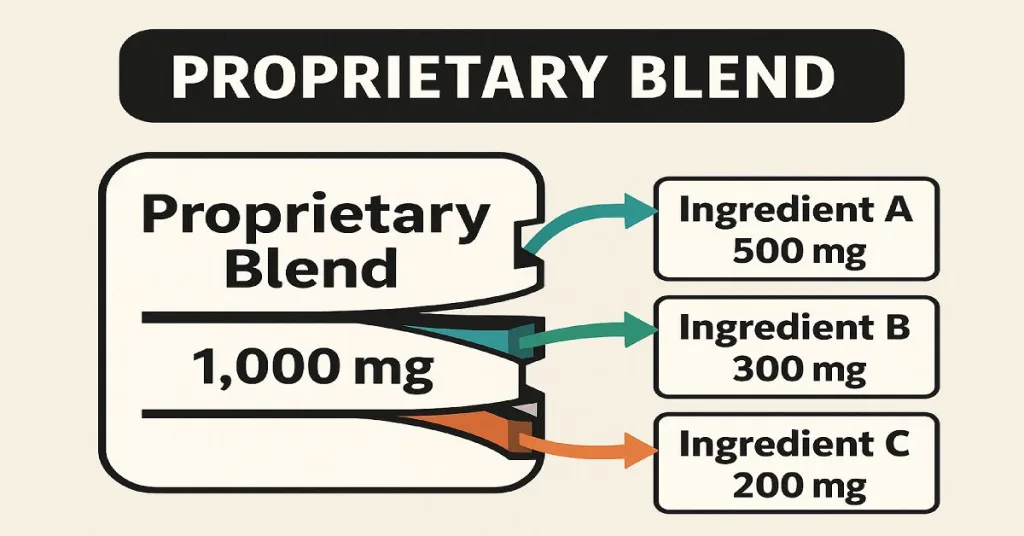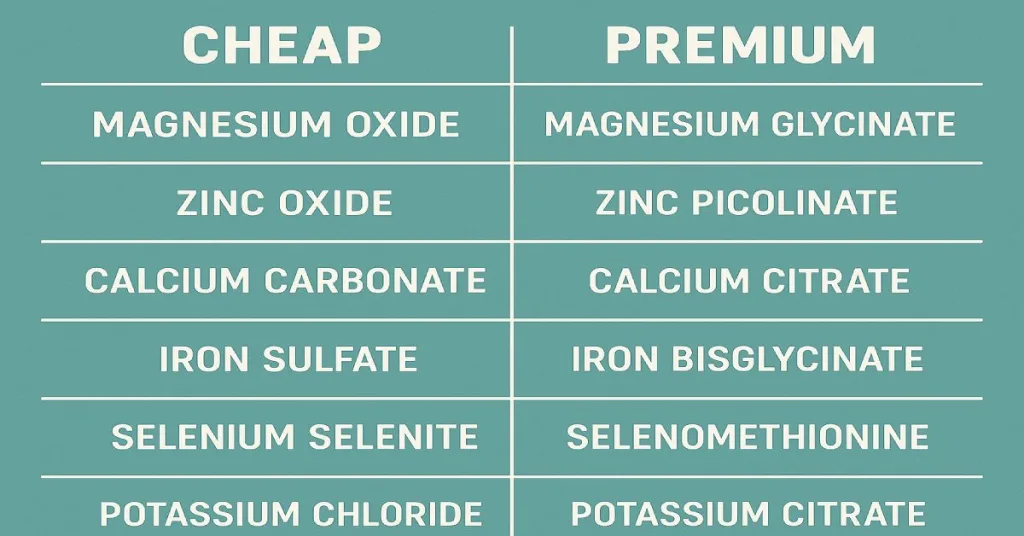You walk into a supplement aisle or scroll through Amazon, and bam — there it is.
A $59 bottle of turmeric with shiny gold labels, words like “ultra-premium,” and some random influencer’s face on the side. And your wallet says: “Nope.”
Here’s the truth: most overpriced supplements are not better — just better marketed.
This guide will teach you how to avoid getting ripped off and find cheaper, effective alternatives that do the exact same thing — sometimes even better.
This post may contain affiliate links. If you click and purchase, I may earn a small commission at no extra cost to you. I only recommend products I personally use or have thoroughly researched.
Why Are Some Supplements So Expensive?
Let’s start with the uncomfortable truth: markup in the supplement industry can exceed 1000%. That’s not a typo.
Here’s what you’re usually paying extra for:
- Fancy packaging — Embossed fonts and metallic caps don’t help your liver.
- Celebrity endorsements — Influencer ads = your wallet suffering.
- Proprietary blends — A legal way to hide low ingredient dosages.
- Trendy buzzwords — “Detox,” “cleanse,” “bioavailable,” “doctor-formulated” — all vague and unregulated.
The sad part? None of that means the product works better.
1. Red Flag: Proprietary Blends
This is the number one scam tactic.
When you see “Proprietary Blend: 1250mg” followed by a list of ingredients, you’re being played. You have no idea how much of each ingredient is actually in there — and it’s usually a sprinkle.
Example:
Proprietary blend (turmeric, ginger, boswellia, black pepper) — 1500mg
Looks good… until you realize that black pepper extract (for absorption) might only be 1mg, making the whole thing useless.
What to do:
✅ Look for individual ingredient amounts.
✅ Avoid blends unless they’re transparent with dosages.
✅ Cross-reference with clinical doses (like 500–1000 mg turmeric with 5 mg piperine).

2. Check the Per-Dose Price, Not Just the Bottle
Marketers love tricking you with big numbers.
- A $40 bottle might look cheaper than a $55 one — but what if it only lasts 15 days?
- A “2 capsule serving” product might contain 60 capsules = 30 servings
- Another might contain 120 capsules but require 4 capsules per serving = also 30 servings
Do the math:
Price ÷ Servings = Price per dose
You’d be shocked how many “budget” brands are actually charging double per dose once you calculate it.
3. Spot the “Clean Label” Trap
You’ll see a lot of brands shouting about being:
- GMO-free
- Gluten-free
- Vegan
- Soy-free
- Made in USA
- 3rd-party tested
Those are great. But don’t confuse “clean” with “effective.”
Many overpriced supplements use clean-label marketing to distract you from under-dosing the main ingredient.
Example:
“Non-GMO, Vegan, Gluten-Free Magnesium Complex”
But it’s only 50 mg elemental magnesium… when most people need 200–400 mg.
4. Learn the Cheap vs. Premium Ingredient Forms
This is where price sometimes does matter — but not always.
Some ingredients come in cheap, poorly absorbed forms. Others are high-quality and cost a little more for good reason.
Here’s a quick cheat sheet:
| Ingredient | Cheap Form (Avoid) | Better Form (Look For) |
|---|---|---|
| Magnesium | Magnesium oxide | Magnesium glycinate, malate, or citrate |
| Zinc | Zinc oxide | Zinc picolinate or bisglycinate |
| B12 | Cyanocobalamin | Methylcobalamin |
| CoQ10 | Regular ubiquinone | Ubiquinol |
| Carnitine | L-carnitine base | L-carnitine fumarate or acetyl-L-carnitine |
| Vitamin D | D2 | D3 (cholecalciferol) |
✅ Some of these premium forms are actually cheaper if you know where to look.

5. Compare Per-Ingredient Cost on Amazon or iHerb
Let’s say you’re shopping for:
- NAC (N-acetyl cysteine)
- You see one bottle: 60 capsules of 600 mg for $28
- Another brand: 120 capsules of 600 mg for $20
That’s literally double the value.
Use filters to compare:
- Serving size
- Ingredient amount
- Number of capsules
- Cost per serving
Don’t fall for “most popular” tags — they’re often sponsored listings.
6. Know When a Stack is Just Markup in Disguise
Stacked supplements are often just multiple ingredients you could buy separately for less.
Example:
“Liver Detox Complex” — $39.99
Contains: Milk thistle, NAC, Alpha Lipoic Acid, Turmeric
Individually, those 4 ingredients could cost:
- Milk Thistle – $6
- NAC – $10
- ALA – $8
- Turmeric – $9
= $33 for full-dose versions
But the overpriced stack?
✅ Probably underdosed
✅ Lacks key absorption enhancers
✅ Hidden behind a proprietary blend
✅ Might last fewer days per bottle
7. Watch for Useless Fillers and Extra Ingredients
Cheap brands might pad out formulas with:
- Rice flour
- Silicon dioxide
- Magnesium stearate
- Artificial colors
- Gums and binders
Premium brands charge more because they avoid this junk. But some overcharge for avoiding fillers too.
You want a middle ground: clean formula, fair price, effective dose.
8. Don’t Assume “Doctor Formulated” Means Better
This phrase means almost nothing legally.
Some companies slap “doctor formulated” on a label because one naturopath reviewed it once.
If the dosage is weak, or the form is cheap, a doctor’s face on the label doesn’t mean squat.
9. Where to Find Cheaper Equivalents (Without Getting Scammed)
Here are reliable sources where you can often find identical or better supplements for less:
- Amazon – Filter by “highly rated,” “subscribe & save,” and “capsule count”
- iHerb – Great international brand selection + reviews
- Swanson Vitamins – Often cheaper house-brand versions
- Vitacost – Regular promos and bundle savings
- Pure Bulk – Great for single-ingredient powders
- Costco – Surprisingly solid options for basic vitamins (CoQ10, D3, Magnesium)
Also: don’t ignore reliable budget brands (like NOW, Doctor’s Best, Nutricost, Life Extension). These often beat the flashy Instagram brands on both price and quality.
10. Read Reviews — But Filter the Fake Ones
Some tips for spotting legit reviews:
✅ Look for reviews mentioning exact results, dosage, and timing
🚩 Be wary of hundreds of 5-star reviews with no detail
🚩 “Tastes great! Just started today!” = Worthless
Amazon is getting better at flagging fake reviews, but always scroll deep to spot patterns.
TL;DR: How to Never Overpay for Supplements Again
Here’s your cheat list to keep in your phone:
- ❌ Avoid proprietary blends
- ✅ Check cost per dose, not per bottle
- ✅ Learn the better ingredient forms
- ✅ Don’t be fooled by shiny packaging or “doctor-formulated” labels
- ✅ Compare on Amazon, iHerb, Swanson, and Costco
- ✅ Break up overpriced stacks and buy separately
- ✅ Check reviews, but trust your research
Smart buyers save hundreds per year — and get better results.
Bonus: Tools That Help You Compare Supplement Prices Fast
- SupplementsReviewer.com – Aggregates Amazon data by price/ingredient
- Labdoor.com – Tests for purity, label accuracy, and ranking
- iHerb Compare Tool – Lets you compare brands side-by-side
For further reading: Seasonal Supplement Sales: When to Stock Up for the Year